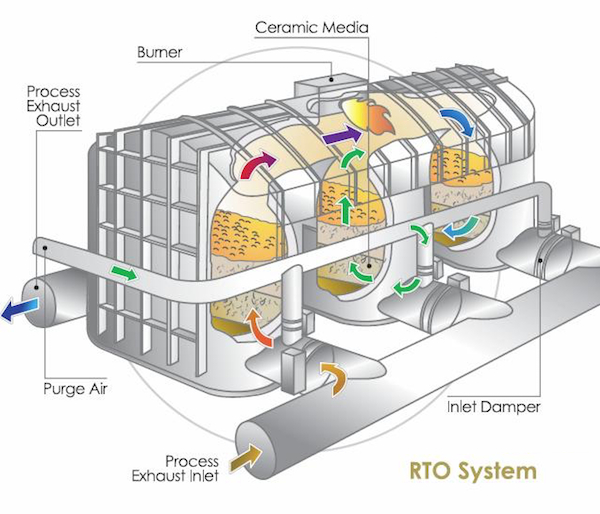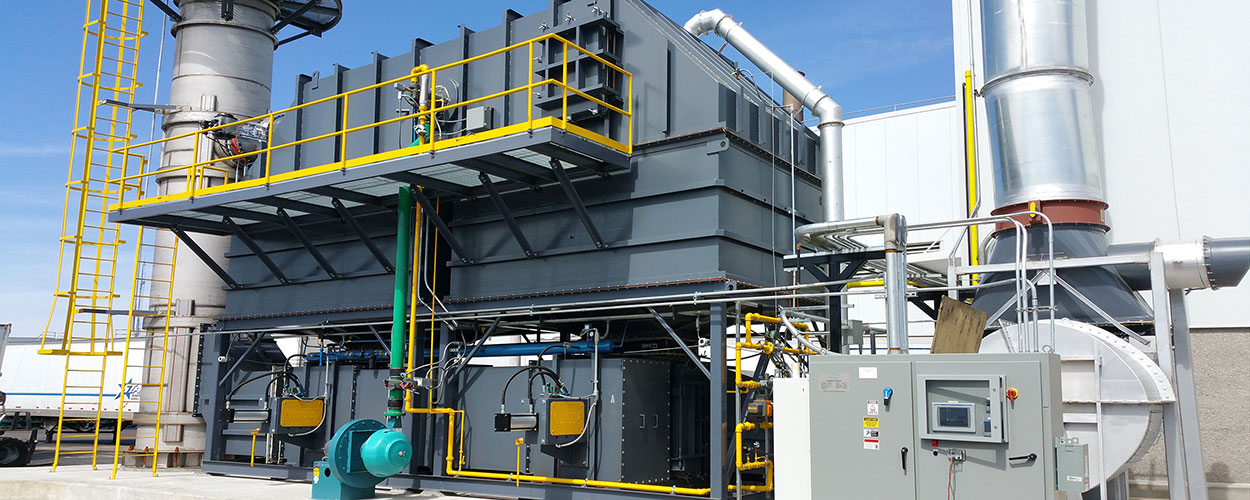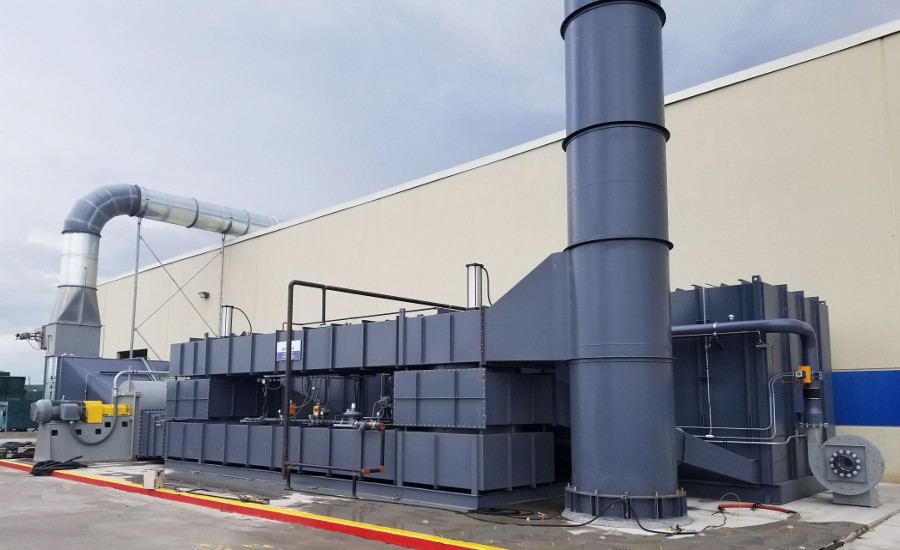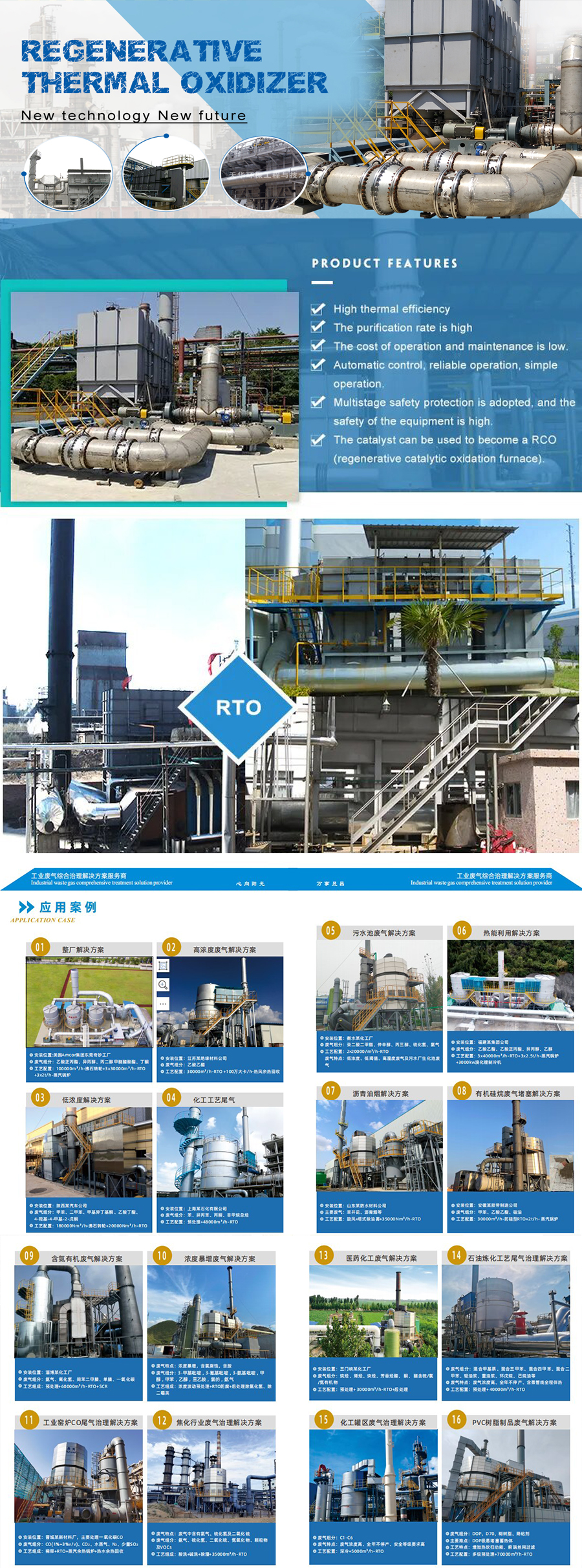基本訊息
類型
環境監測儀器
品牌
雷德桑特
狀態
新的
清潔效率
99.8%
應用
化工
主要功能
廢氣去除
商標
雷德桑特
運輸套餐
薄膜包裹
起源
中國 浙江
產品描述
杭州瑞德森機械有限公司;,;有限公司;專業開發製造創新粉末冷卻造粒機械及相關工業廢氣處理設備。具有近20年的生產歷史;我們在中國20多個省份擁有良好的市場;部分產品出口沙烏地阿拉伯、新加坡、墨西哥、巴西,;西班牙,;美國,;俄羅斯和韓國; ETC。
規格:;
* 比現有設施更緊湊
* 營運成本低
* 設施使用壽命長
* 壓力無變化
目的:;
燃燒揮發性有機化合物(VOC)的節能係統;利用熱量產生廢氣;採用陶瓷蓄熱材料(催化劑)收集99.;8%以上的廢氣餘熱;表面積大,壓力損失低;
應用:;
1.;塗裝乾燥工藝
2.;金屬印刷工藝
3.;纖維乾燥過程
4.;膠帶工藝
5.;廢棄物處理工藝
6.;半導體製造工藝
7.;抽煙,;糖果和烘焙過程
8.;石化過程;
9.;醫藥和食品製造過程;
10.;其他VOC產生過程
優點:;
* 比現有設施更緊湊
* 壓力無變化
* 熱回收率高(95%以上);
* 完善的VOC處理(99.;8%以上);
* 設施使用壽命長
* 營運成本低
* 可製作圓形或四邊形
一般描述與特點:;
1.;工作原理
透過旋轉旋轉閥連續改變流量的操作方法
2.;過程壓力變化
由於旋轉閥的旋轉,風向會發生順序變化,因此壓力不會變化
3.;投資成本
約 70% 的床型
4.;安裝空間
它是單一容器,因此結構緊湊,需要的安裝空間較小。
5.;維護
由於旋轉閥是唯一的 1 個移動部件,因此易於維護。
旋轉閥由於旋轉速度低,密封件很少磨損;
6.;穩定
在此過程中沒有風險,因為即使旋轉閥出現故障,它也始終打開。
7.;處理效率
即使長時間運行,密封件也很少磨損,處理效率得以維持;
地址:浙江省杭州市經濟開發區振新中路3號
業務類型: 製造商/工廠, 貿易公司
業務範圍:化工、電氣電子、製造加工機械、安全防護
管理系統認證:ISO 9001
主要產品:造粒機、刨片機、造粒機、造粒機、化學造粒機、Vocs
公司簡介:杭州瑞德森機械有限公司,前身為杭州新特塑膠機械廠,是一家專業生產創新塑膠回收機械的企業。憑藉近20年的經驗,我們在國內20個省市自治區擁有良好的市場,部分產品出口到印尼、俄羅斯、越南等。管材撕碎回收生產線、連續退火鍍錫機、QX型PET、PE及皮殼清洗生產線、SDP雙軌塑膠回收破碎機、SJ熱切造粒機組、PVC管(五葉)生產線、PVC異型材產品門窗生產線、水中顆粒生產線以及塑膠和回收粉碎機。我們獲得了5項技術專利。
本公司注重技術改造,引進國內外先進技術,不斷開發新產品。我們的宗旨是挑戰高品質,提供最好的產品。我們正在努力實現我們的口號。讓客戶滿意是我們永恆的追求。
我們正在尋找海外客戶或代理商。如果您對我們的提案感興趣,請讓我們知道我們的哪種產品最有可能吸引您或您的客戶。如果您能給我們一些關於我們產品的市場前景的想法,我們將不勝感激。我們希望盡快收到您的有利訊息!我們的目標是希望現在或不久的將來能與您建立良好的關係。如果您有任何問題或要求,請隨時與我們聯繫。
我們也真誠歡迎您來本公司洽談業務、洽談業務。為進一步拓展市場與客戶,本公司以全新的經營理念-品質、榮譽、服務,以全新的品牌姿態迎接國內外客戶。我們正在尋找 ISO 90001 管理品質系統來滿足客戶的要求!

How do regenerative thermal oxidizers comply with emissions regulations?
Regenerative thermal oxidizers (RTOs) are designed to help industries comply with emissions regulations and air quality standards. They employ several mechanisms to ensure compliance:
- Pollutant Destruction Efficiency: RTOs are engineered to achieve high destruction efficiencies for pollutants, typically exceeding 99%. This means that the vast majority of volatile organic compounds (VOCs) and hazardous air pollutants (HAPs) present in industrial exhaust streams are effectively destroyed, reducing their emissions to levels that meet or exceed regulatory requirements.
- Emission Monitoring and Reporting: RTOs often incorporate monitoring systems to measure and record various parameters, including pollutant concentrations, temperature, airflow rates, and pressure differentials. These systems enable operators to continuously monitor the performance of the RTO and ensure compliance with emissions regulations. The collected data can be used for reporting purposes to demonstrate compliance to regulatory authorities.
- Compliance with Emission Limits: RTOs are designed and operated to meet specific emission limits set by local, regional, and national regulatory agencies. These emission limits define the maximum allowable concentrations or mass emissions of pollutants that can be released into the atmosphere. RTOs are equipped with control mechanisms, such as combustion chambers, heat recovery systems, and monitoring devices, to achieve and maintain emission levels within the prescribed limits.
- Regulatory Standards and Certifications: RTOs are designed and manufactured in accordance with industry standards and guidelines, such as those set by environmental protection agencies and organizations. Compliance with these standards ensures that the RTOs meet specific criteria for performance, safety, and emissions control. Additionally, some RTO manufacturers may obtain certifications or approvals from regulatory bodies to validate their equipment’s compliance with emissions regulations.
- Periodic Inspections and Maintenance: Regular inspections, maintenance, and performance evaluations are essential to ensure ongoing compliance with emissions regulations. These activities help identify any potential issues or deviations from the required performance levels and allow for timely corrective actions. Proper maintenance practices, such as cleaning of heat exchangers, replacement of damaged components, and calibration of monitoring devices, contribute to maintaining the RTO’s effectiveness in emissions control.
It’s important to note that compliance with emissions regulations is a shared responsibility between the industry operating the RTO and the regulatory authorities overseeing environmental compliance. Industries must follow proper operating procedures, adhere to emission limits, and maintain the RTO in accordance with manufacturer’s guidelines and regulatory requirements to ensure continuous compliance.

Can regenerative thermal oxidizers handle high-temperature exhaust streams?
Regenerative thermal oxidizers (RTOs) are designed to handle high-temperature exhaust streams efficiently. They are capable of accommodating exhaust gases with elevated temperatures and effectively treating them for pollutant removal. Here are some key points regarding the handling of high-temperature exhaust streams in RTOs:
- Thermal Stability: RTOs are constructed using materials that can withstand high temperatures, typically ranging from 800 to 1,500 degrees Celsius (1,472 to 2,732 degrees Fahrenheit). The combustion chamber, heat exchangers, and other components are designed to maintain their structural integrity and thermal stability under these conditions.
- 熱回收: One of the primary advantages of RTOs is their ability to recover and reuse heat from the high-temperature exhaust streams. The heat exchangers within the RTO capture the thermal energy from the outgoing exhaust gases and transfer it to the incoming process air or gas stream. This heat recovery process improves the overall energy efficiency of the system and reduces the need for additional fuel consumption.
- Effective Combustion: RTOs are equipped with combustion chambers where the high-temperature exhaust gases are directed. In the combustion chamber, the pollutants in the exhaust stream are oxidized at high temperatures, typically above the autoignition temperature of the pollutants. This ensures effective destruction of the pollutants, even in high-temperature environments.
- Heat Exchange: RTOs utilize a regenerative heat exchange system, which allows for the efficient transfer of heat between the incoming and outgoing gas streams. The heat exchange media within the RTO alternately absorbs and releases heat, enabling the preheating of the incoming gases and cooling of the outgoing gases. This heat exchange process helps maintain the desired operating temperatures within the RTO while maximizing energy recovery.
- System Design Considerations: When handling high-temperature exhaust streams, proper system design is crucial. Factors such as the choice of materials, insulation, and thermal expansion considerations are taken into account to ensure safe and efficient operation at elevated temperatures. Additionally, temperature monitoring and control systems are implemented to maintain optimal operating conditions.
It is important to note that the specific temperature limits and capabilities of an RTO may vary depending on the design, materials used, and the specific requirements of the application. Consulting with experienced engineers or RTO manufacturers can provide valuable insights into the suitability of an RTO for handling a particular high-temperature exhaust stream.
Overall, RTOs are well-suited for handling high-temperature exhaust streams, offering effective pollutant destruction, heat recovery, and energy efficiency in industrial applications.

Can regenerative thermal oxidizers reduce odor emissions?
Regenerative thermal oxidizers (RTOs) are effective in reducing odor emissions from industrial processes. While their primary purpose is to control and destroy volatile organic compounds (VOCs) and hazardous air pollutants (HAPs), they can also effectively mitigate odorous compounds.
Here’s how RTOs contribute to odor reduction:
- Oxidation of Odorous Compounds: RTOs operate at high temperatures, typically ranging from 1,400 to 1,800 degrees Fahrenheit (760 to 980 degrees Celsius). These elevated temperatures facilitate the complete oxidation of odorous compounds, breaking them down into harmless byproducts, such as carbon dioxide and water vapor. The thermal oxidation process ensures the destruction of odor-causing molecules.
- 破壞效率高: RTOs are designed to achieve high destruction efficiencies, often exceeding 99%. This means that the vast majority of odorous compounds are effectively eliminated during the combustion process, resulting in a significant reduction in odor emissions.
- 保留時間: RTOs provide a sufficiently long retention time for the exhaust gases within the combustion chamber. This allows for thorough mixing and residence time necessary for the complete oxidation of odorous compounds. The extended contact time ensures that the odorous molecules have sufficient exposure to the high temperatures, resulting in their destruction.
- Control of VOCs: Many odorous compounds are also VOCs. By effectively controlling and destroying VOC emissions, RTOs indirectly reduce odor emissions as well. The comprehensive destruction of VOCs prevents their release into the atmosphere, thereby minimizing the associated odors.
- Monitoring and Optimization: Proper monitoring and optimization of RTO operation can further enhance odor reduction. By continuously monitoring the process parameters, such as temperature, airflow, and pollutant concentrations, adjustments can be made to optimize the performance of the RTO and ensure effective odor control.
It’s important to note that while RTOs are effective in reducing odor emissions, the specific odor compounds and their concentrations in the exhaust stream can influence the overall odor control efficiency. Additionally, proper design, operation, and maintenance of the RTO are crucial for achieving optimal odor reduction.

editor by CX 2023-10-14
